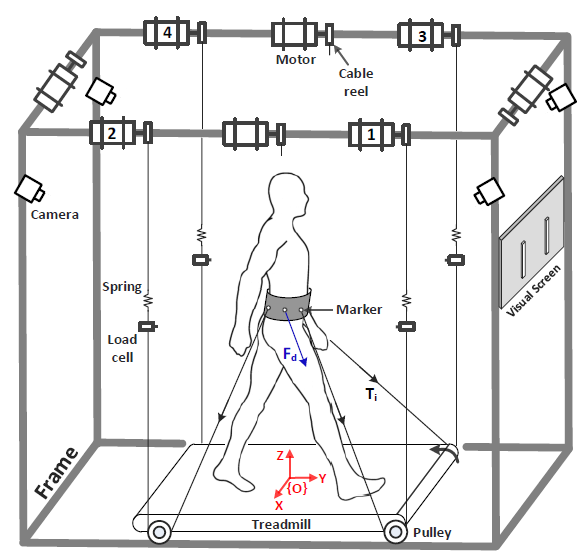27 September 2016. A robotic device to improve the balance of people going through rehabilitation after spinal cord injury is being developed by an engineering-medical team from Columbia University and University of Louisville. The 5-year project to advance Tethered Pelvic Assist Device, or Tpad technology, begun in the lab of Columbia engineering professor Sunil Agrawal, is supported by a $5 million award from the New York State Spinal Cord Injury Board.
Spinal cord injuries are usually caused by a sudden, traumatic blow to the spine that bruises or tears into spinal cord tissue, resulting in fractures or compression to vertebrae, or in some cases severing the spinal cord. Depending on severity, people with spinal cord injuries often suffer loss of feeling or motor function in the limbs, and in some cases complete paralysis. According to the National Spinal Cord Injury Statistical Center, spinal cord injuries occur in 40 out of 1 million people in the U.S., adding some 12,500 new cases each year.
Agrawal, with colleagues from Columbia’s medical school in New York and medical researchers Susan Harkema and Claudia Angeli at the Kentucky Spinal Cord Injury Research Center at University of Louisville, are furthering development of Tpad to improve the balance of spinal cord injury patients during their rehabilitation. Tpad is light-weight cable-driven robotic device worn by the patient programmed to provide both motion variability to the pelvis as well as corrective stability.
Harkema’s lab investigates activity-based rehabilitation for spinal cord patients, including the benefits of stimulation to the lumbar, or lower region of the spinal cord. Their research shows the effectiveness of combining this lower-back stimulation and principles of motor learning with rehab techniques that get the patients standing, even patients with severe injuries. A continuing problem for the patients, however, is maintaining balance, making it difficult to transfer their progress to daily life.
The Columbia-Louisville team plan to apply Tpad technology to improving the balance and posture of spinal cord injury during rehab patients’ training to restore walking gait. Tpad has a pelvic belt with cables or tethers providing support connected to motors, with a real-time motion capture system and controller to regulate tension in the cables. The device can be programmed to support pelvic forces in any direction and respond to bodily motions as the patient walks on a treadmill. Its tethers also can apply symmetric or asymmetric force on the pelvis, if needed.
Agrawal’s lab previously designed a robotic exoskeleton for stroke survivors to regain their walking gait, but Tpad fills an important gap. “Robotic exoskeletons are typically designed to assist in training of human movements during the swing phase of the gait,” says Agrawal in a Columbia statement, “but there are currently no robotic devices that can effectively be used for posture and balance training during standing.”
Tpad, Agrawal adds, can be used in a number of ways to restore walking and standing. He notes that “sensory input, repetition, and challenged behavior can drive the spinal networks to adapt appropriately and generate functional activation across the level of injury.”
Read more:
- Stem Cells Aid Motor Functions in Spinal Cord Patients
- Patent Given for Non-Invasive Spinal Stimulation Technology
- Spinal Cord Injury Device Trial Completes Enrollment
- Spinal Stimulation Start-Up Wins $200K State Award
- Trial Testing Stem Cell Therapy for Spinal Cord Injury
* * *


 RSS - Posts
RSS - Posts
You must be logged in to post a comment.